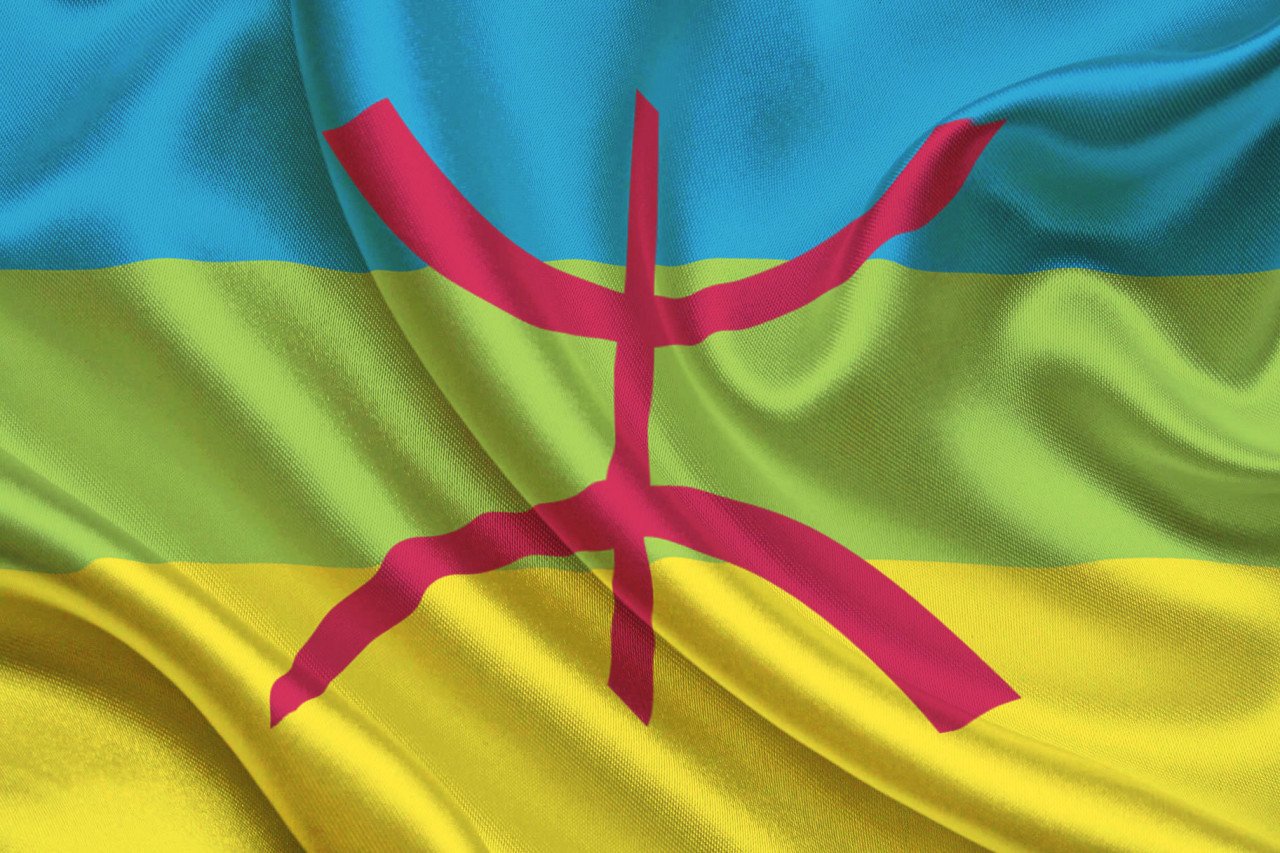Lifestyle
Things to know about Yennayer, Amazigh New Year

The Berber population of Algeria observes Yennayer, the first day of the new year in the Berber calendar on January 12. Beginning on Tuesday 12 January, Amazigh individuals in Algeria, Tunisia, Morocco, Libya, and parts of Egypt, as well as the diaspora, will celebrate Yennayer, the Amazigh new year.
Berbers (or, how they call themselves, Amazighs) are an ethnic group of a few countries that are indigenous to North Africa. Today, they generally live in Algeria, Morocco, Tunisia, Mauritania, Libya, and parts of Mali, Niger, and Egypt.
It denotes the beginning of the Berber (Amazigh) New Year. In December 2017, President Abdelaziz Bouteflika of Algeria declared that Yennayer would consequently be a paid non-working day the nation over on January 12th.
On 30 May 2018, the individuals from the Council of the Nation (Upper House of Parliament) received the bill modifying and complementing the law on public holidays, building up Yennayer as a paid national holiday.
Even though this day isn’t perceived in Morocco as a national holiday, most Moroccan Berbers will observe Amazigh new year and exchange wishes and prayers during this day.
Yennayer is the first month of the Berber Year (Aseggwas Amaziɣ, ⴰⵙⴻⴳⴳⴰⵙ ⴰⵎⴰⵣⵉⵖ) or the Berber year used since antiquity by the Berbers in North Africa. Its first day relates to the first day of January of the Julian Calendar, which is moved thirteen days contrasted with the Gregorian calendar, for example, 14 January of every year.
The year 2021 in the Gregorian calendar denotes the year 2971 for the Amazigh, who is otherwise called the Imazighen.
Going back to antiquity, the celebration is established in North African folktales and legend and represents the connection between the Imazighen and the land they live upon, as well as the earth’s riches and liberality. Yennayer is consequently a celebration of nature, agrarian life, rebirth, and abundance.
In recent times, the celebration of Yennayer has taken on an additional significance as a method of keeping the Amazigh cultural identity alive.
The term “Yennayer” is likewise the name given to the first month of the Amazigh calendar.
When is Yennayer?
The evening going before Yennayer is an event known as “Thabbourth Aseggas” (the door of the year) by the Kabyles of Algeria or “Id Suggas” by Amazigh groups in Morocco. This event falls on 12 January and marks the beginning of the celebrations in Algeria. The official state holiday of Yennayer in Algeria additionally concurs with Thabbourth Aseggas on 12 January.
Some Amazigh groups in Morocco and somewhere else start their celebrations on 13 January.
Etymologically, the word “Yennayer” is believed to be a mix of the Amazigh words “Yenn” (One) and “Ayur” (month). An elective clarification is that the word is a getting from the Latin “Ianuarius”, from which the word January in English and “Yanayir” in Arabic are at last determined.
The Imazighen’s agricultural calendar starts on 13 January and is inspired by the Julian calendar, which was predominant in North Africa during the days of Roman domination.
Yennayer likewise denotes the beginning of a 20-day-long period known as the “Black Nights”, which represent one of the coldest seasons.
What is the Amazigh calendar?
Albeit most Berbers changed over to Islam in the 7th century, their calendar depends on the Julian calendar as opposed to on the Islamic calendar. The zero points of the Berber calendar is the date when the Berber King Shoshenq was enthroned as Pharaoh of Egypt and established the Bubastite Dynasty that managed over Egypt for over two centuries. Along these lines, the Berber calendar is 950 years in front of the Julian and Gregorian calendars.
The Amazigh calendar began taking on a formal structure during the 60s when the Academie Berbere, an Amazigh cultural association situated in Paris, decided to begin counting Amazigh years from the year 950 BC. The date was picked to coordinate the pharaoh Shoshenq I’s rising to the throne of Egypt.
Since the Berber calendar, much the same as the Julian calendar it depends on is 13 days behind the Gregorian calendar, the Berber New Year falls on January 14 in the Gregorian calendar. Nonetheless, it is generally celebrated on January 13 in Libya, Morocco, and the Canary Islands and on January 12 in Algeria.
Shoshenq was an Amazigh of Libyan descent and is one of the most outstanding Amazigh figures in antiquated North African history. For Imazighen, the date accordingly represents strength and power.
The Amazigh calendar is straightforwardly obtained from the Julian calendar, which was utilized in Europe before the Gregorian one. It was utilized in North Africa to control the agricultural seasons.
When was Yennayer initially celebrated?
Yennayer celebrations go back to artifact yet a definite date is difficult to decide. Contrary to common belief, Yennayer festivities have nothing to do with the Pharaoh Shoshenq I, and the tradition is considered by the Imazighen to have gone before the monarch.
A few myths and legends have formed to clarify the inception of the event and one commonly shared folktale includes a stubborn old woman.
In Amazigh tradition, the month of Yennayer is said to have initially had just 30 days.
A diligent old woman is said to have challenged the rage of winter by taking her goat touching during the last day of Yennayer, one of the Black Nights.
Annoyed by the elderly person’s insolence, Yennayer acquired an additional day from Furar (February) and constrained an additional cool night on the lady in retaliation.
The story is a purposeful anecdote expressing the significance of living in harmony with nature, and the significance of patience and caution. In a region known for its cold winters and hot summers, North Africans confronted exhausting challenges in protecting their crops and guarding their health.
In December 2017, President of Algeria Abdelaziz Bouteflika pronounced Yennayer a public holiday. Since Algerian Berbers have been campaigning for cultural autonomy and have looked to get Yennayer broadcasted as a public holiday for quite a while, this can be viewed as a significant achievement for them.
Who celebrates Yennayer?
Yennayer is celebrated by both the Amazigh, whose culture has its roots in pre-Arab North Africa, and Arab communities in the Maghreb region, and a few parts of Egypt.
A few Arabs in Morocco and Algeria refer to it as “aam filahi” [agrarian year]. Yennayer celebrations are getting all the more generally recognized as more North Africans take an interest in Amazigh culture and its origins.
How would you plan for Yennayer?
Yennayer celebrations focus on family social events and getting a charge out of joyful music. Most families prepare for the day by setting up a feast of traditional foods with family matriarchs leading the plans for the feast.
It has additionally gotten standard to wear traditional Amazigh outfits and jewelry, particularly for the event.
By the theme of rejuvenation, wealth, and life, Yennayer has become an event for significant life events, for example, weddings, circumcisions, and a child’s first haircut.
In certain areas of Algeria, Yennayer celebrations last as long as three days. The family assembles every day for a festive meal, normally semolina porridge on the first day, couscous with seven vegetables on the second day, and chicken on the third day.
Individuals express them all the best for the new year by saying: “Aseggas Ameggaz” or “Yennayer Amrvouh (Happy New Year)”.
What do the Yennayer celebrations represent?
Yennayer is tied in with living in harmony with nature regardless of its capability to make life-threatening conditions, for example, heavy rains, cold, and the perpetual danger of starvation. Confronted with these difficulties, the antiquated Amazigh people groups idolized nature.
Religious beliefs changed with the appearance of Judaism, Christianity, and later Islam in North Africa, however, the celebration remained.
Legend has it that whoever feasts on the day of Yennayer will spend the rest of the year not stressing over starvation or destitution.
The bounty of abundance is expressed by cooking couscous with seven vegetables and seven different spices.
Before, every individual from the family needed to eat a chicken all alone to ensure they were full on the day of Yennayer. A full belly on Yennayer is intended to represent fullness and prosperity for a whole year.
It is likewise tradition for women to take a few crumbs and leave them outside for insects and birds, a symbolic gesture to ensure no animal remains hungry on Yennayer.
Another method of celebrating Yennayer in Algeria is by planning “Treize”- a mix of sweets, chocolate, and nuts – gently thrown on the most youthful kid in the family to represent wealth and abundance.
What do individuals eat on Yennayer?
As on most North Africa events, couscous is ever-present on dinner tables, as are sweets, for example, khfaf (otherwise called sfenj) which is a North African donut. In Algeria, feasts incorporate Tamina, a sweet dish made of toasted semolina mixed with butter and honey, and afterward traditionally decorated with cinnamon.
How do governments observe Yennayer?
In 2018, Algeria became the first North African nation to make Yennayer a national holiday trying to perceive Amazigh culture in the nation. Other North African nations have not assigned the celebration as a national holiday notwithstanding it being praised generally and famous help for making it a national holiday.
How will the coronavirus pandemic affect the Yennayer celebration 2021?
Almost certainly, Yennayer 2021 will be influenced by the pandemic and North Africans will avoid huge family gatherings, as well as street celebrations.
In recent years, schools in Algeria have looked to clarify the significance of Yennayer through plays and choirs in the Amazigh language, Tamazight. This year, such events will be canceled per efforts to battle the spread of Covid-19.
In its essence, Yennayer is tied in with making peace with an occasional harshness of nature and praising the capacity to endure as well as to flourish notwithstanding confronting difficulties.
The pandemic may give us one more motivation to be thankful for surviving and to celebrate Yennayer.
To mark this new year often ‘called “January Night”, traditional food is orikmen, a thick soup made of wheat and dry fava beans. Orikmen is just ever eaten on the first day of the Amazigh New Year. Another famous dish is Tagola, produced using corn kernels, argan oil, ghee, and honey cooked and mixed with butter.
Customarily, Berbers observe Yennayer with a hearty meal to guarantee a prosperous year. It is standard to cook special dishes that are regularly held for festive events, obviously, the staple of the Amazigh food, couscous with chicken or seven vegetables, is consistently present on the holiday table. Also, every region where Berbers live has its own traditional holiday dishes.
Berbers think about the first day of the new year to be the day of fresh starts. For instance, little boys often get their first haircut on this day. Furthermore, it is viewed as the first day of the agricultural year. It is additionally believed that couples who get married during the first month of the year will have a happy marriage.
-

 Travel4 weeks ago
Travel4 weeks agoMichael Hopkins, Denver: Rethinking the Airport Experience for Modern Travelers
-

 Tech3 weeks ago
Tech3 weeks agoJonathan Amoia’s Insights on the Intoxication of Artificial Intelligence
-

 Education3 weeks ago
Education3 weeks agoBelfast AI Training Provider Future Business Academy Reaches Milestone of 1,000 Businesses Trained
-

 Business3 weeks ago
Business3 weeks agoAdel En Nouri’s Tips for Writing a Business Plan in 2026 That Actually Works
-

 Health3 weeks ago
Health3 weeks agoTolga Horoz: How Developing an Interest in How People Solve Problems Shapes Better Thinking and Innovation
-

 Cryptocurrency3 weeks ago
Cryptocurrency3 weeks agoWhen Crypto Markets Calm Down: How NB HASH Builds Stable Passive Income Through AI Computing Power
-

 Sports2 weeks ago
Sports2 weeks agoUnited Cup 2026: Full Schedule, Fixtures, Format, Key Players, Groups, Teams, Where and How to Watch Live
-
Tech4 weeks ago
The ProLift Rigging Company Examines the Data Center Construction Boom












